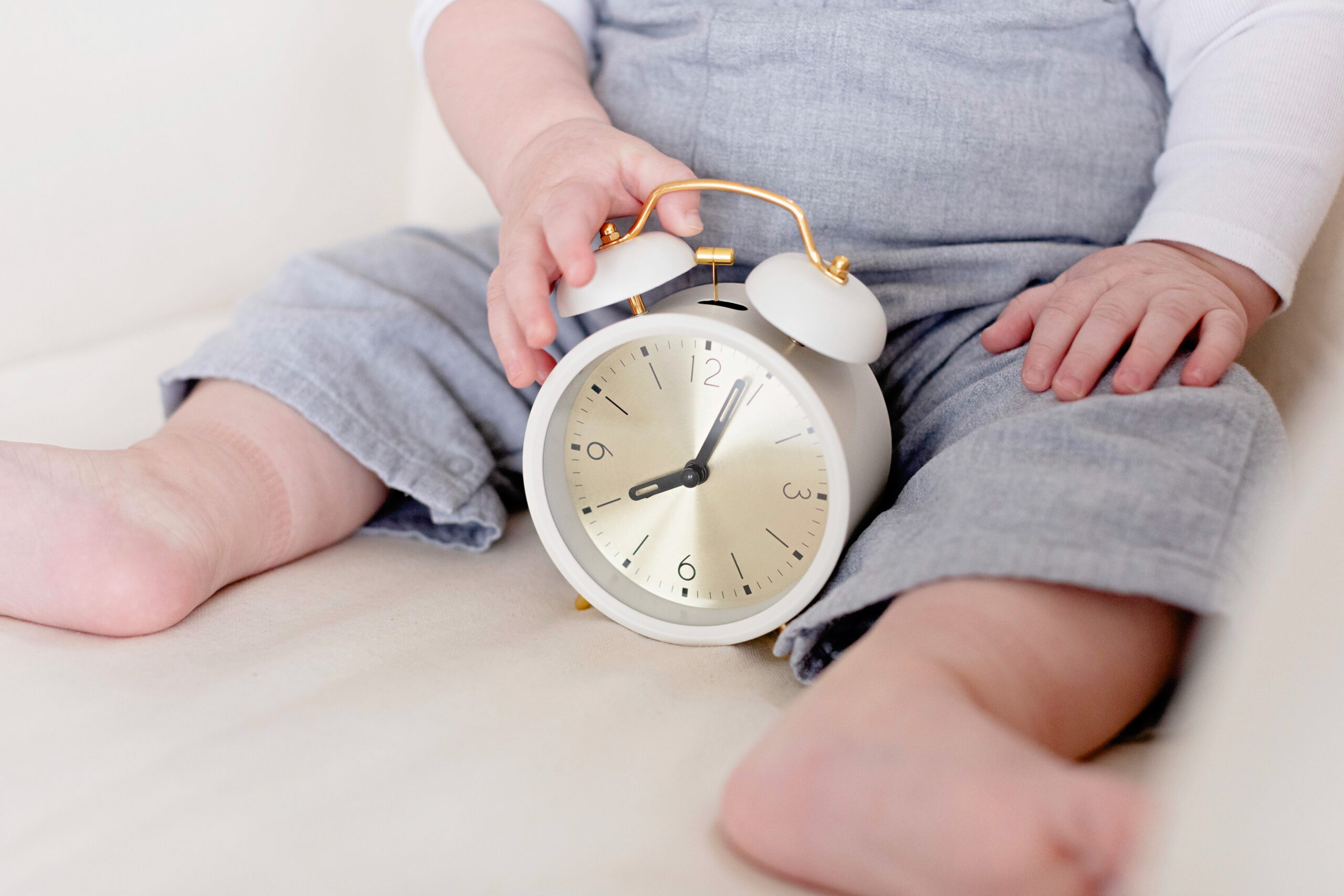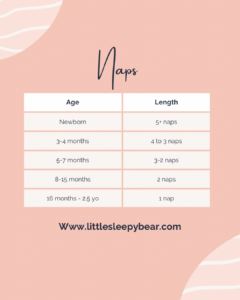Wake windows or schedule? You are probably wondering what you should follow for your baby, right?
In this blog post, we’re going to dive into baby sleep schedules and wake windows. So, if you’ve ever wondered about the best way to structure your baby’s sleep, how to understand their sleep cues, or whether you should follow a strict schedule or more flexible wake windows, you’re in the right place. Together, we’ll talk about wake windows, how to create a schedule that fits your baby’s unique needs, and how to adapt as your child grows and changes. By the end of this post, you’ll be equipped with the knowledge and confidence to guide your baby into restful sleep
So, settle in, grab a comforting cup of your favorite drink, and let’s talk about sleep schedules!
WAKE WINDOWS
What are they?
A wake window is a period of time your baby can stay awake between sleeps. A wake window starts when your baby wakes up from the night or from a nap and ends when your baby falls asleep. They will vary in length as your baby grows up and also vary between babies. They are often based on your baby’s sleepy cues which are physical and behavioral signs your baby shows when they are tired.
Why using them?
Understanding and following wake windows can be a game-changer for both you and your baby. This approach helps prevent your baby from becoming overly tired, especially in the case of newborns who might not always display clear signs of fatigue. When a baby gets too tired, they tend to become fussy, making it more challenging to put them down for a nap or bedtime.
Here’s a general guideline for the average length of wake windows:

Sleepy cues signs
When it comes to sleep, your baby will communicate with you they are tired by showing physical and behavioral signs that we call sleepy cues. You can learn them by observing your baby, but be patient! Understanding your baby’s sleepy cues can take a little while. These signs are generally the red eye brows, slowing in activities or interests, yawning, rubbing eyes and
pulling ears. Sleepy cues are really awesome to use when your baby is tired but can also be really hard to see. That’s why keeping an eye on the wake windows can be really useful.
There are also cues for sleep that we are showing to our baby. These are the nap routine and the sleep environment. When you have a routine for nap and bedtime, you help your baby understand what’s coming next. These cues can be dimming the light, turning the sound machine on, putting your baby in their sleep sack and more.
SCHEDULE
What are they?
Schedules for babies, often referred to as baby routines or baby schedules, are structured plans that align with specific wake windows for a given age group, but they also follow a clock-based approach. These schedules outline the timing of various activities and caregiving tasks for babies and young children. Typically, they include feeding times, nap times, diaper changes, playtime, and bedtime. Creating a consistent schedule can provide routine and predictability, which can be comforting for both the baby and parents. These schedules are adaptable as the baby grows and their needs evolve, offering a framework for caregiving and supporting healthy development.
When should you use a schedule?
A clock-based schedule can be implemented once your baby is taking two naps or less per day, which is usually around 6 months of age. Around 3-4 months, your baby’s circadian rhythm, their internal biological clock, begins to regulate, and you can start observing patterns in sleep, hunger, hormone production, and more. Just like us, babies can establish predictable routines. By 6 months, your baby’s circadian rhythm should be well-established, and following a clock-based schedule will likely align with their needs.
Why using a schedule?
A schedule offers greater flexibility for parents. Knowing when the next nap or feeding will occur can transform your entire day. Say goodbye to the stress of fitting pediatrician appointments, daily activities, and more into an unpredictable routine. Using a schedule also helps reinforce your baby’s circadian rhythm and ensures that the hormone production occurs at the right times.
CREATING A ROUTINE OR SCHEDULE
When you set out to create a routine or a schedule for your baby, consider factors such as your baby’s age (adjusted age if they were born prematurely), the number of naps they take each day, and their overall sleep needs.
The first step is to establish a consistent wake-up time and bedtime. Many routines begin at 7 am, but you can adjust this to suit your family’s needs. Starting the day at 6 am or 8 am is equally acceptable. Ensure that your baby’s bedtime is approximately 12 hours after they wake up. For example, if your day starts at 8 am, aim for a bedtime at 8 pm.
Next, determine the total amount of daytime sleep your baby requires. A 6-month-old baby won’t need the same amount of daytime sleep as a 12-month-old. Even though both may follow a 2-nap schedule, the duration of their naps and the wake windows between them will vary.
Then, know how many naps your baby needs each day. Younger babies will need more naps during the day as their wake windows are shorter.
Here are the number of naps babies need depending of their age:
This is an approximate guideline. Some babies are ready to drop a nap earlier than others and vice versa.
Example for an 8month-old baby who’s wake windows are about 2h30/3h and is on a 2-nap schedule.
Morning wake up desired: 8am
The first wake window of the day is usually the shorter. In that example, this baby’s wake windows are about 2h30/3h, the first wake window could be around 2h. The first nap would be at 10am. Ideally we would like a 2h nap.
First nap: 10-12pm
Second nap will happen after about 2.5h of wake windows.
Second nap: 2:30pm – 4:30pm
Bedtime: 8pm
The last wake windows is usually the longest. This allows your baby to have a bigger sleep pressure to be able to sleep longer stretches without being overtired.
How long naps should be?
A common rule suggests that a nap should last a maximum of 2 hours if your baby has two or more naps per day. While this guideline is helpful, it may not be a one-size-fits-all solution. Every family has its own routines, and each baby has unique sleep needs. Monitoring your baby’s sleep patterns can provide valuable insights. Allowing your baby to sleep longer during their first nap might be beneficial if you know the second nap won’t occur due to errands or appointments. However, be mindful that occasionally letting your baby sleep excessively during the day can interfere with subsequent naps and bedtime. It’s essential to observe and adapt based on your baby’s individual needs and your family’s lifestyle.
In this blog post, we’ve explored the concepts of wake windows and schedules for babies, providing valuable insights into how to navigate your baby’s sleep journey. By understanding your baby’s unique needs and the benefits of following these guidelines, you can create a perfect routine that promotes healthy sleep patterns and provides predictability for both you and your little one. Remember that your baby’s development is a dynamic process, and what works best may change over time. Trust your instincts as a parent, and feel confident in adapting these strategies to suit your family’s lifestyle and your baby’s individual needs.
If creating your own schedule is still a little messy and you are not sure about it, feel free to download my FREE SLEEP SCHEDULE GUIDE that follows appropriate wake windows.
Ready to Create a Peaceful Sleep Routine for Your Baby?
If your actual routine doesn’t really work anymore and you’re ready to change it to a better one while maintaining your gentle parenting approach, I’m here to help. As a certified baby and toddler sleep coach, I prioritize your baby’s well-being and minimize crying. Contact me today to explore how we can work together to create a sleep plan tailored to your family’s needs. Your
well-rested nights are just a click away.


View comments
+ Leave a comment